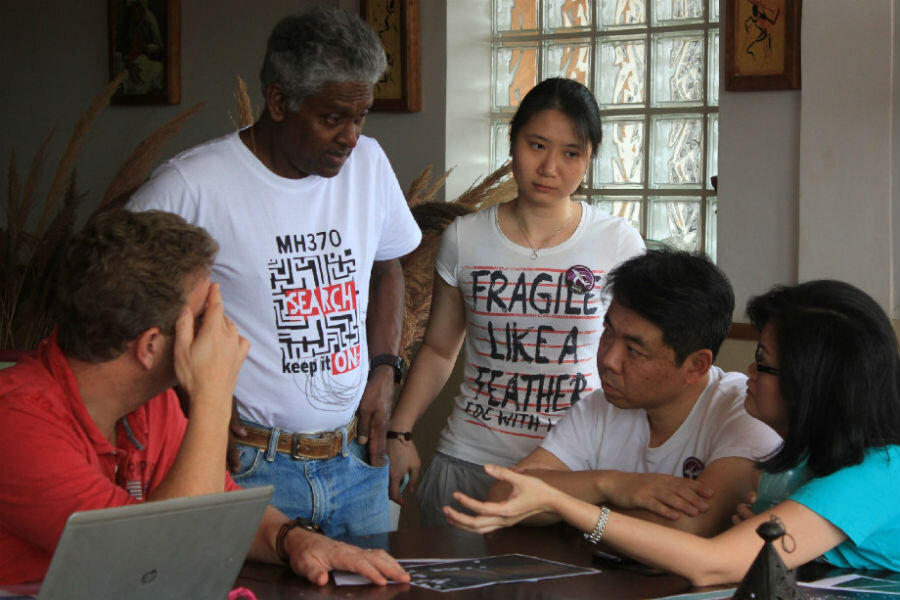How MH370 relatives are taking the investigation into their own hands
Loading...
More than two years after Malaysia Airlines Flight MH370 went missing, some of the relatives of the 239 passengers and crew are taking the investigation into their own hands, with a trip to Madagascar.
Half a dozen relatives traveled to the capital city of Antananarivo on Saturday, kicking off an effort to ask locals for their help in searching for debris from the missing Boeing 777, which is believed to have crashed in the southern Indian Ocean.
While in Madagascar, the relatives, hailing from Malaysia, China, and France, plan to meet with community leaders and residents of coastal villages call attention to the missing flight.
"We hope that we can raise awareness, teach them about how to identify debris, how to collect debris, what to do with it when they find it," Grace Nathan of Malaysia, whose mother was on the flight, told the Associated Press.
Since its disappearance in March 2014, unsuccessful efforts to solve the mystery of the missing Malaysia Airlines flight have resulted in a number of theories regarding its whereabouts. New reports and discoveries continue to surface – just last month, a report by the Australian Transport Safety Bureau suggested that the plane was likely unmanned during its final dive into the ocean after examining a piece of the aircraft wing found off the coast of Tanzania – but the fate of the 239 passengers and crew members remains unknown.
The media hype around the mysterious disappearance has drawn comparisons to the sinking of the Titanic, as Weston Williams reported for The Christian Science Monitor in November:
Every new report and discovery reignites public interest in the ongoing search for the plane. After two and a half years of analysis and guesswork, MH370 has attained a pseudo-legendary status reminiscent of the response to the sinking of the Titanic...
When MH370 disappeared from flight radars in 2014, it was hardly the first time a commercial airliner had crashed. But as rescue efforts turned up nothing, the mystery surrounding the disappearance began to mount, fueled by rampant speculation on social media and the news.
"Titanic was supposed to be unsinkable. In this day and age, how can a large plane be un-locatable, unfindable, untraceable?" William Nesbitt, a professor of English and chair of the department of humanities at Beacon College, told the Monitor. "We just can’t fathom how it can disappear and never reappear."
For some relatives of the missing passengers, attempting to solve the mystery themselves is also a way of dealing with the emotional pain that comes with the loss of family members.
Ghislain Wattrelos, who lost his wife and two of his three children on the flight, told the Associated Press that assisting with the investigation helps his "recovery process."
While in Madagascar, Mr. Wattrelos and other visiting relatives plan to spread the word about the missing plane in rural coastal communities – where villagers are "not so savvy with the Internet," as Ms. Nathan puts it – by speaking with local residents, church leaders, and non-governmental groups.
"Mobilizing the local population is a good start," Nathan said. "We want to keep the search going."
This report contains material from the Associated Press.








